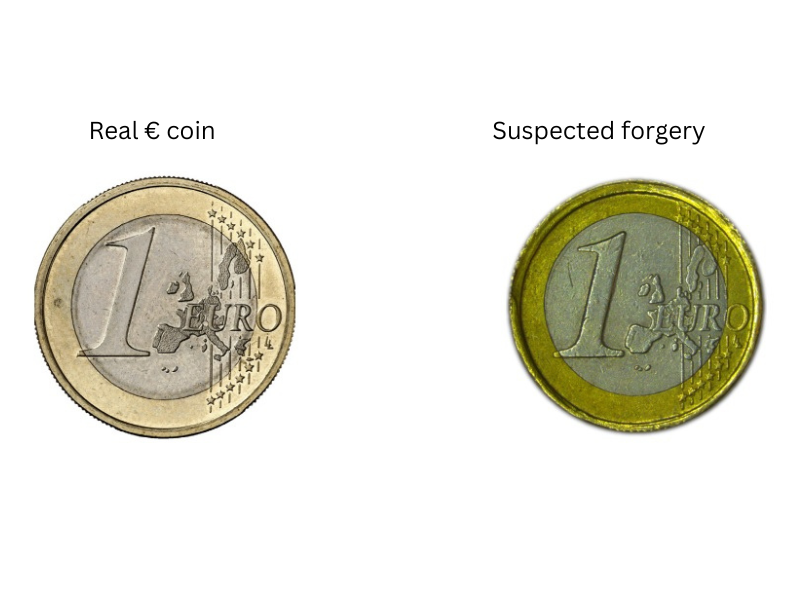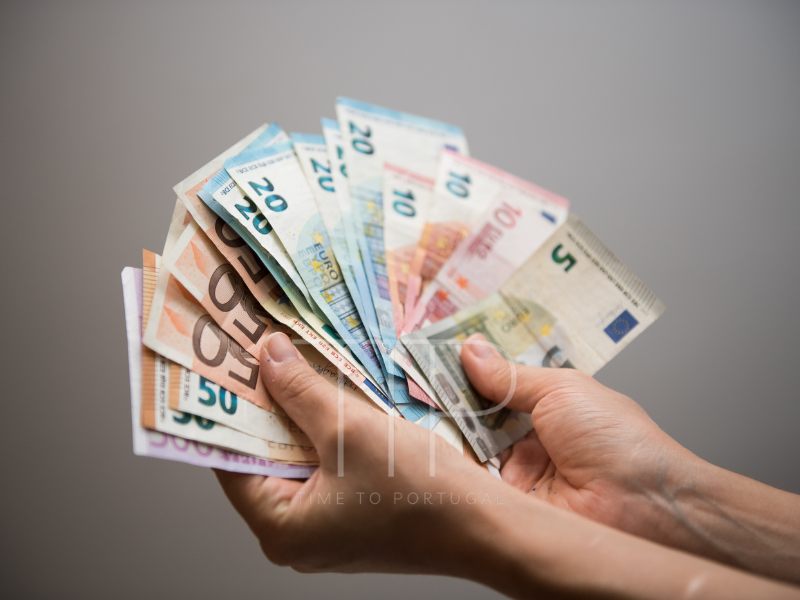During 2023, 16,723 counterfeit banknotes were seized in Portugal, an increase on the previous year.
This figure represents 3.68% of the total seized in the Eurosystem, i.e. the amount of counterfeits is residual when compared to the almost 30 billion euro banknotes in circulation.
According to the Bank of Portugal, two seizures in cases of fraud involving 100 and 200 euro notes contributed to this increase. These seizures justify the fact that 100 euro notes were the most seized in Portugal, changing the trend seen in previous periods.
The regulator also points out that the counterfeits seized could be identified using the “Touch – Observe – Tilt” method. “It is important that users check banknotes when they receive them, as counterfeits are not refunded and cannot be used in payments (passing a counterfeit note is a crime),” warns the Bank of Portugal.
How can I identify a counterfeit note?
To find out if a banknote or coin is counterfeit, several security features must be checked using the “Touch-Observe-Tilt” methodology, which does not require the use of any auxiliary equipment.
If in doubt, compare. Always look at the differences, not the similarities.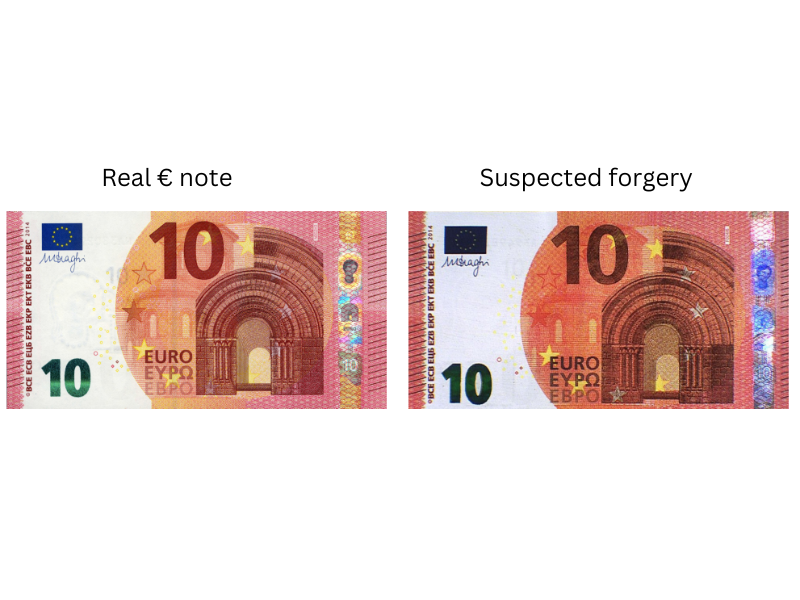
You can also see the transparency. On the suspect banknote, the design of the watermarks (a portrait of the goddess Europa and part of the architectural motif) differs in design and tone from the design of the genuine banknote, and the security thread has no text (the value of the banknote and the euro symbol).
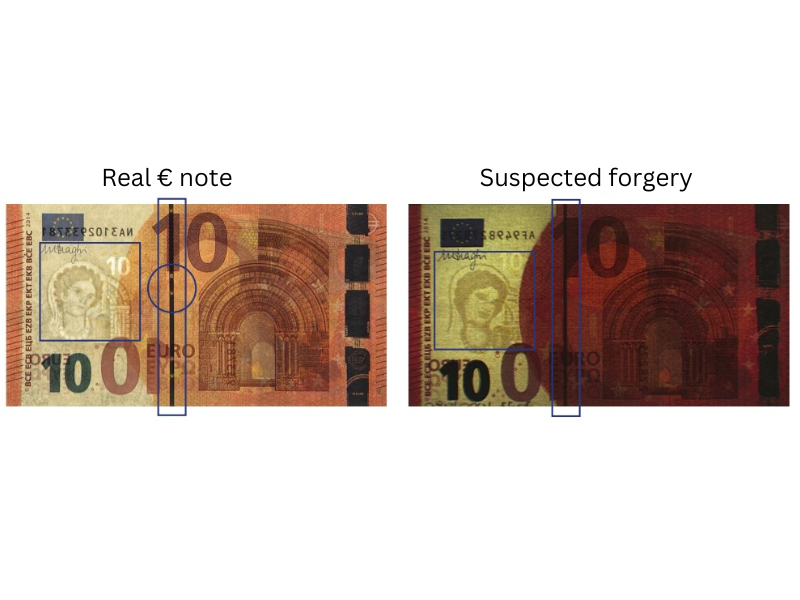
By tilting the banknote, you can also see that, on the suspect banknote, the suspect holographic band does not show any color diffraction and the graphic elements that make it up (for example, the architectural motif and the value of the banknote) are almost imperceptible. In addition, the emerald number on the suspect banknote shows a structured image with some color diffraction, but which is not fixed, and the luminous effect of upward/downward movement is not visible.
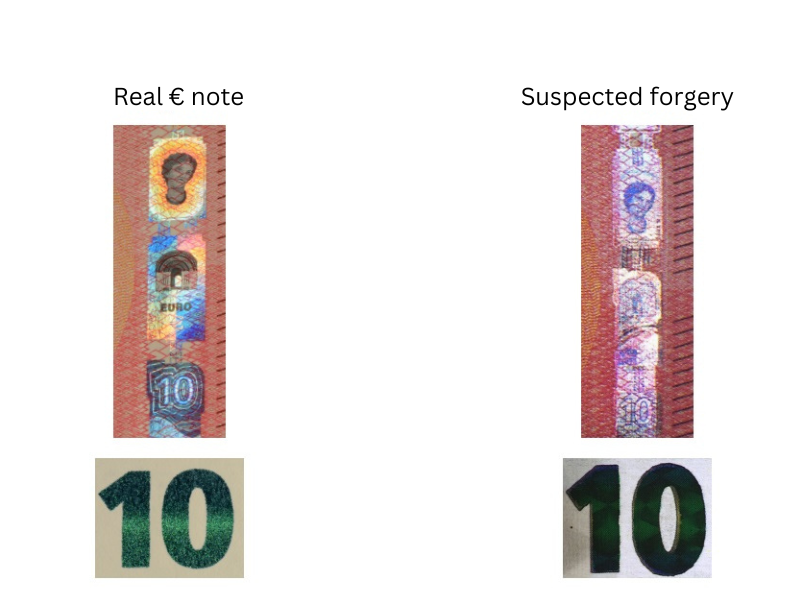
You can also look under a magnifying glass and notice that the suspect banknote has no microtexts, particularly inside the star located next to the value of the banknote (on the front of the banknote).
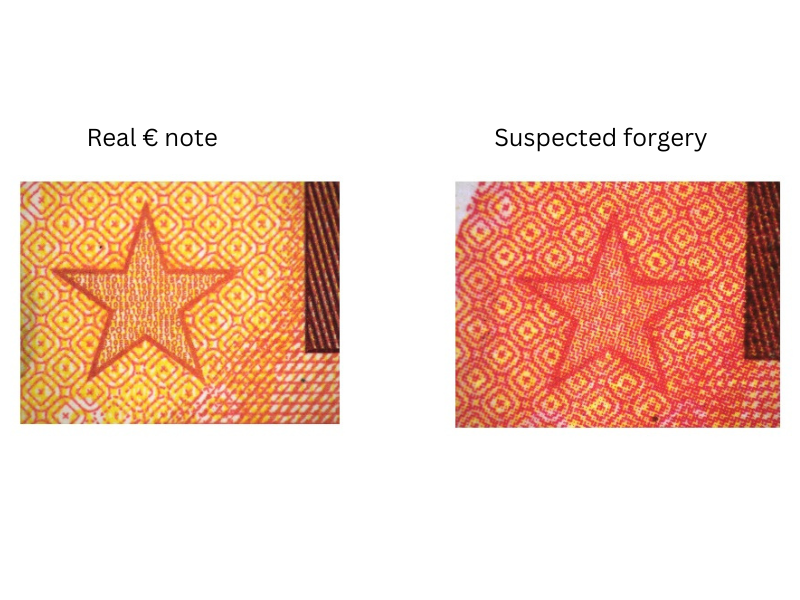
Lastly, under ultraviolet light, the suspect banknote does not have tricolor fluorescent fibers and, despite having fluorescent inks, their location and coloring are not correct. It can also be seen that the watermarks and the security thread react in the opposite way to what was expected and are visible on the back of the banknote.
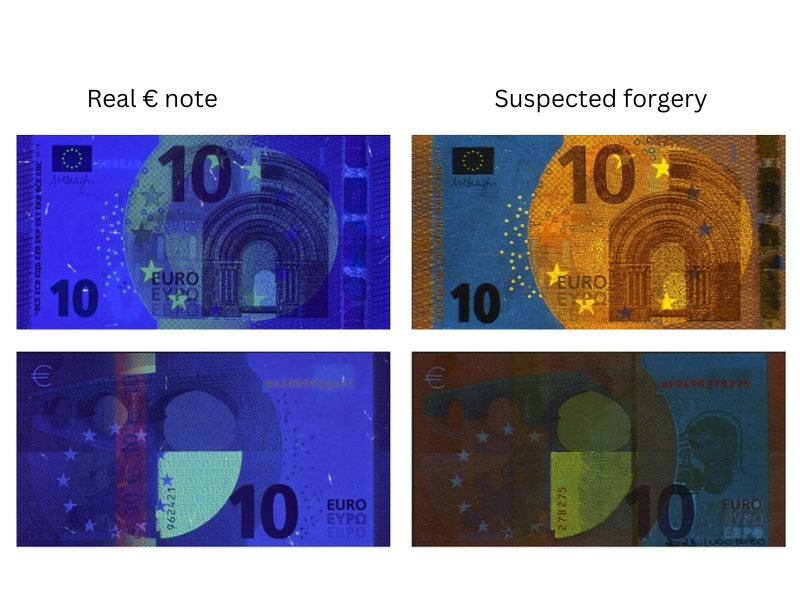
What about coins?
“The euro coin integrates highly sophisticated security features that make it one of the most secure in the world,” explains the Bank of Portugal, adding that most counterfeit euro coins are considered to be of poor quality.
Nevertheless, you can also use the “Touch-Observe-Verify” methodology.
In a first analysis, visual characteristics such as the embossed design on the surface of the coin or the alignment of both sides should be assessed. Using a magnifying glass, you can check for the absence of microdots on the surface of the map, various irregularities in negative relief and, in the upper area near the first two stars, a line in positive relief.
